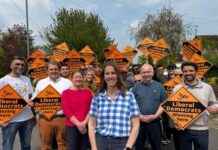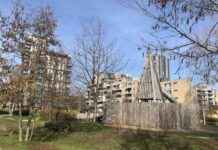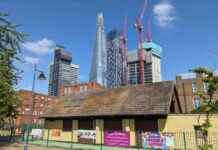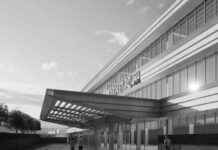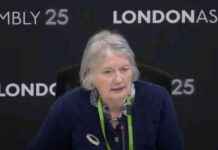London’s first election of 2025 in Barnet’s Burnt Oak ward showcased Labour’s resilience in the capital, despite a dip in vote share. Burnt Oak, a long-standing Labour stronghold within the borough, saw an intriguing by-election unfold following the departure of former Labour councillor Ammar Naqvi.
The Burnt Oak ward, home to the historic Watling Estate, is a quaint residential area with a rich history dating back over a century. This community, named after a striking oak tree that fell victim to a lightning strike centuries ago, has evolved into a diverse neighborhood characterized by red-brick, low-rise family homes interspersed with green spaces. The Watling Estate, a focal point of the area, was designated a Conservation Area in 1998, adding to its allure.
The Burnt Oak ward, known for its social and political significance, is a melting pot of cultures and faiths. With a population that is 43% white, 26% Asian, and 17% black, the neighborhood reflects London’s vibrant diversity. Alongside a mix of Christian, Muslim, and Hindu residents, Burnt Oak boasts a unique blend of traditions and backgrounds that enrich the fabric of the community.
One of the defining features of Burnt Oak is its housing landscape, shaped by the public sector and the impact of the Right to Buy scheme. This attractive suburb has seen a shift in ownership dynamics, with a notable portion of the estate transitioning to private ownership. The dynamic housing market has transformed the neighborhood over the years, adding layers to its storied past.
Labour’s legacy in Burnt Oak dates back decades, with the Watling Estate serving as a beacon of support for the party since the 1930s. Dubbed “Little Moscow” in the past, this community has remained steadfast in its allegiance to Labour, even during challenging political climates. The recent by-election, triggered by Naqvi’s resignation, marked a pivotal moment in Burnt Oak’s political landscape.
The by-election, a six-way contest featuring candidates from major parties and Reform UK, unfolded with Labour’s Charlotte Daus emerging victorious. Daus, a regional officer of the Royal College of Nursing, secured a comfortable win in Burnt Oak, underscoring the community’s enduring support for Labour. Despite a dip in vote share compared to previous elections, Labour’s stronghold in Burnt Oak remained unshaken, with Daus garnering over 45% of the votes.
The by-election results, while reflective of Labour’s local support, also shed light on broader political trends in London and beyond. As Labour faces challenges in other parts of the country, Burnt Oak’s outcome highlighted the party’s stronghold in the capital. The division of the opposition vote between the Tories and Reform played a crucial role in securing Labour’s victory, emphasizing the unique dynamics at play in Burnt Oak.
Looking ahead to the next full council elections in May 2026, Burnt Oak’s by-election serves as a microcosm of the shifting political landscape within the borough. While the results offer valuable insights into local dynamics, they also hint at broader trends shaping electoral outcomes across the country. As Burnt Oak prepares for future contests, the community remains a focal point of political engagement and civic participation, embodying the diverse spirit of London’s vibrant neighborhoods.
Supporting local journalism and community voices is critical in shaping the narrative of our shared experiences and values. By engaging with grassroots initiatives and supporting independent reporting, we contribute to a more informed and inclusive society. As we navigate the complexities of modern politics, Burnt Oak’s by-election serves as a reminder of the power of local democracy and the enduring spirit of community engagement.











